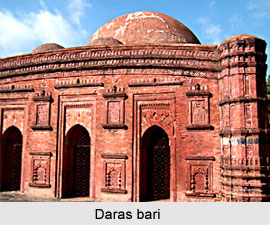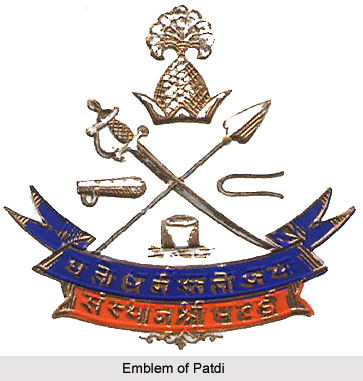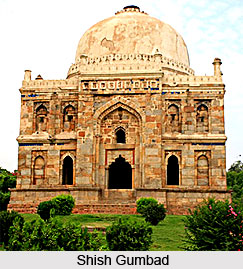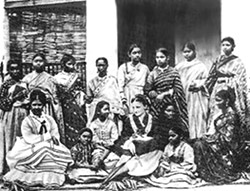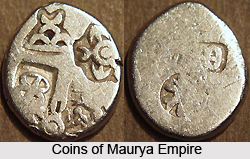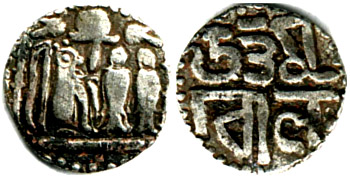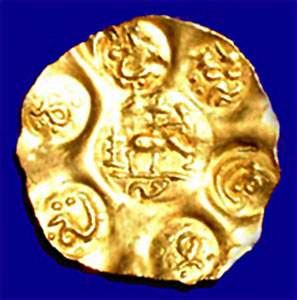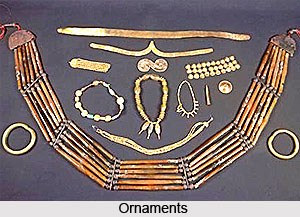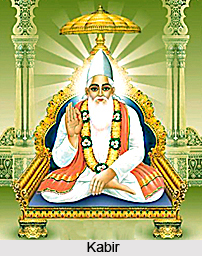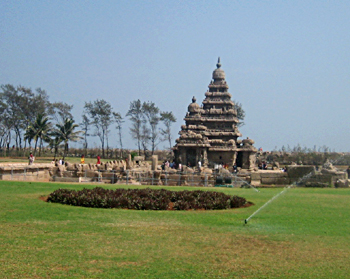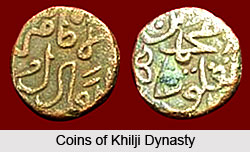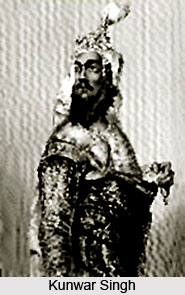 The story of the besiege of Arah is one of foresight, gallantry, perseverance, energy and devotion. The clairvoyant organiser of the successful resistance to the blood-thirsty sipahis was Vicars Boyle, an engineer connected with the railway. But his companions were all worthy of association with him. They had long regarded the outbreak of the sipahis at Danapur as probable. When it did occur they gathered in the house which Boyle had prepared, provisioned, and to a certain extent fortified.
The story of the besiege of Arah is one of foresight, gallantry, perseverance, energy and devotion. The clairvoyant organiser of the successful resistance to the blood-thirsty sipahis was Vicars Boyle, an engineer connected with the railway. But his companions were all worthy of association with him. They had long regarded the outbreak of the sipahis at Danapur as probable. When it did occur they gathered in the house which Boyle had prepared, provisioned, and to a certain extent fortified.
The mutinous sipahis, assisted by the recruits of Kunwar Singh, a large landowner, crowded to attack the little house on the evening of the 27th. They were met by a stern opposition such as they evidently had not anticipated. They changed their manoeuvre then, and brought up guns to assist them. They used these on the 28th, and during the day of the 29th. But that night there was a lull. The garrison was cheered by hearing a musketry fire in the direction from which they expected support-the direction of Danapur.
The musketry fire was indeed the result of the proximity of Dunbar`s force. It was however produced mainly by the muskets of the revolted sipahis. Dunbar, in fact, marching carelessly, and without the precautions essential to a night march in a country occupied by an enemy, had fallen into an ambush. He and other officers were killed. The men, surprised, became disheartened. Attempting to retrace their steps to the Son, they were pursued by almost the full force of the rebels. It was an overthrow as complete as it was disgraceful. Many men were killed and wounded during the retreat. When the survivors at last reached Son, they experienced the greatest difficulty in forcing their way to its eastern bank. They at last succeeded. The steamer which had brought them to a certain point was still waiting for them there. On that steamer, instead of the 415 men and fifteen officers whom the steamer had carried, there were now only fifty men and three officers who had been untouched by the enemy`s fire.
The rebuff of the force which, at the instance of Tayler, General Lloyd had despatched to relieve Arah, added greatly to the despondency of that officer. The gloom, the terror, which fell upon Danapur was pathetically gross. Upon Tayler the effect was quite the contrary. It seemed, indeed, impossible to doubt that Arah must fall. If Arah should fall, then the several isolated stations, each depending on its own resources, must inevitably be invaded. Under these circumstances, Tayler, acting like a dexterous general authorised his several subordinate officers at the isolated stations to fall back upon Patna. He further ordered to bring the contents of their treasuries with them, unless in so doing their personal safety should be jeopardised. It was a wise and statesmanlike order. It would have been so accepted by the entire world, but for the sudden appearance on the scene of a man whose genius and daring suddenly changed disaster into conquest.
The man who accomplished this feat was a major in the artillery, and had served in the first Kabul war. He had also been kept a prisoner there. He had written a story of the events which led to and followed the disaster to the English, and who had since served in Gwaliar (present day Gwalior, Madhya Pradesh) and in Burma. His name was Vincent Eyre. Eyre had just been recalled from Burma, and had been despatched with a European battery. He was on board a steamer from Calcutta bound for Allahabad, on the 10th of July.
Vincent Eyre had reached Danapur the evening of the 25th, the day memorable for the successful rising of the three regiments. He had gone on shore and offered his services to the General. As these were not required, he had proceeded the next day to Baksar, forty-three miles from Arah. There he heard that the mutinied sipahis were advancing by way of Arah towards Baksar.
Eyre left two guns and his only subaltern to protect Ghazipur. Instead, he took twenty-five men of the 78th on to his steamer, and returned that night to Baksar. There he found 154 men of the 5th Fusiliers, who had arrived that afternoon, under the command of Captain L`Estrange. The information Eyre received conveyed to him the impression that the rebels had stopped at Arah to besiege their countrymen there. He then determined to endeavour to persuade L`Estrange to combine with him to march to the relief of that place. He wrote to him to that effect. L`Estrange replied that if Eyre, as senior officer, would send him a written order to that effect, and would take upon himself the entire responsibility, he would obey him. Eyre issued the order straightaway. He knew, of course, that he was risking his commission, because his orders were to proceed to Allahabad. And the march to Arah would take him nearly fifty miles off his direct course. But to the gutsy mind of Eyre the occasion was one in which it was essential to risk his all-and he risked it.
Eyre`s force consisted of forty gunners and three guns, 154 men of the 5th Fusiliers, six officers, including himself, two assistant surgeons, eighteen volunteers - mostly mounted, of whom three were officers, one the Magistrate of Ghazipur and one a veterinary surgeon. The twenty-five Highlanders he had borrowed from Ghazipur, he left at Baksar to avail the first opportunity of returning to their station. His total force amounted only to 220 men and three guns. With that he set out, on 31st July, to attempt a task which had already, less than forty-eight hours before, confounded 430 officers and men.
The news which reached him, on the night of the 31st, of the defeat of Dunbar`s party had no effect upon Eyre and his men. They pushed on all the next day without seeing any enemy, and encamped for the night at the village of Gujrajganj, approximately 6 miles from Arah. After marching a mile the next morning, the rebels appeared in great numbers. They were occupying a wood which Eyre and his men needed to cross. He reconnoitred their position, and then attacked them. The rebels had the advantage of numbers, and of position, and they were invigorated by their defeat of Dunbar. But Eyre`s first attack was so well directed and so sustained that he forced his foe to abandon his position. However, he discovered to his vexation, that it was mandatory to take a far stronger position about a mile in the rear.
As this position was strong enough to fend off a front attack, Eyre, under cover of the fire of his three guns, made a flank movement to gain the nearest point of the railway embankment. This had been newly constructed in Arah. The rebels, however, discovered the movement and its object, and commanding as they did the inner chord of the circle, rushed forward to secure it first. At the same time they disengaged Kunwar Singh`s recruits to harass the rear of the British. The rebels gained the decisive point first, and stationed themselves behind the trees of a wood. The wood flanked the embankment, and the rebels opened a severe musketry fire on the British as they approached. Eyre`s position was now extremely critical. It was mandatory for him to carry within that wood, or be lost. Everything depended upon his coolness and self-possession. And under trying circumstances, no man ever gave keener evidence of the possession of both these qualities.
Calmly surveying the position, Eyre formed his men in combating order, while his guns played upon the woods. The damage these produced was not immense, as the rebels were well sheltered by the trees. Twice, indeed, they sallied forth to charge the guns, but each time they were rebuffed. But they had all the advantage in musketry fire from behind shelter. At the end of an hour, Captain Hastings of the volunteers brought word to Eyre, that the position of the Fusiliers was becoming critical. For such a state of affairs there was but one remedy. The Britons needed to recourse to that splendid weapon which, wielded by British hands, has never failed. The order was given to close in and charge. Promptly it was executed. Led on one flank by L`Estrange, on the other by Hastings, the men of the 5th closed in, and rushing forward with a cheer, cleared the brook which separated them from the wood, and dashed at the enemy.
The rebels did not stand to meet the encounter; they collapsed in chaotic disorder. Eyre pushed rapidly on after them, hoping to reach Arah that night, but he was stopped on the way by a torrential downpour. He spent the whole night in improvising a causeway. Over this, in the early morning, he passed his troops and his guns. An hour later he had the pleasure of rescuing from their danger the gallant garrison which, for eight days, had successfully defied an enemy fifty times more numerous than themselves.
The rebels, meanwhile, had fled to Jagdishpur, the stronghold of Kunwar Singh. Eyre followed them there on the 1lth of August, and stormed and captured it the following day.
Such was the man, and such was the deed which changed the despair of the British residents of Western Bihar into triumph. The action of the victorious Eyre was although upheld by the British Government.


